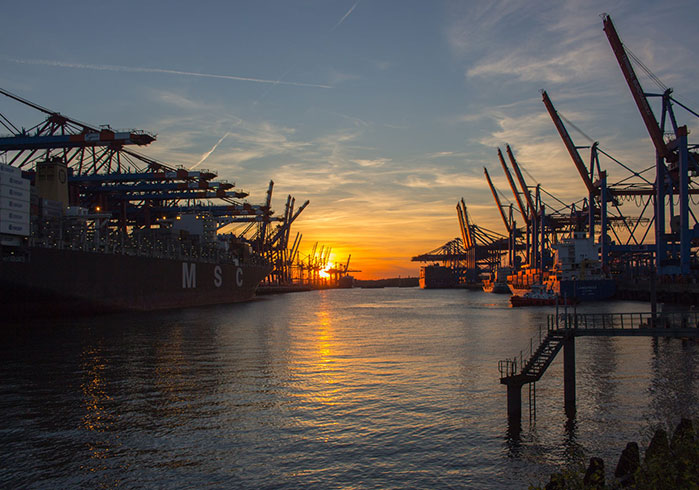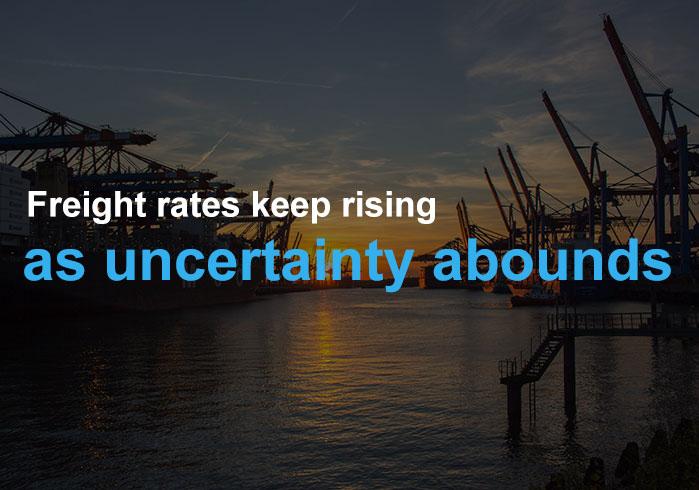
The chaotic end of the 2020 season means potential new prospects for 2021, and the US shipping business will have to contend with tougher-than-usual service contracts as companies try to negotiate today’s market prices. Carriers of all types will have to deal with high freight volumes as e-commerce becomes the new normal, even for routine things like shopping for groceries. Moreover, there is a lot of pressure on capacity, adding to the challenges of organizing logistics efficiently.
Many logistics managers indicate they do not expect a volume reprieve in 2021. For example, we are seeing incredible increments in the volume of containerized imports from Asia, sometimes touching on double digits. The pressure on transportation companies and the entire supply chain is intense.
Expert Opinions
John Janson of SanMar sees an entirely different game than the industry players have been accustomed to so far. He posits an increased use of the “shipper-of-choice” concept within the shipping industry. That means shippers will have to demonstrate in clear terms that they are “Beneficial Cargo Owners,” or BCOs, of choice.
Characteristics of BCOs include creditworthiness and best practices in the use of equipment. When assessing whether a shipper is a BCO, a manager might consider how quickly the shipper has been able to complete the circle and open up space for additional business. According to Janson, those that take a long time and travel extended distances will be paying higher prices than easier assignments.
New Challenges in 2021
Lori Fellmer of BassTech International suggests the problem of gaining access to ocean capacity will continue to prevail in 2021. Many of the existing manufacturing companies felt that the contracts that they were working within 2020 did not meet their needs. One solution Fellmer suggests is diversification. But what diversification looks like in practice can vary within each individual company.
One way diversification can help is through the use of non-vessel-operating common carriers or NVOs. Alternatively, companies may work with freight forwarders. Another option is the use of the ocean spot market. This is particularly true of the large BCOs with a reputation to protect and also to leverage in their transactions. Some of these large BCOs including SanMar and BassTech are already moving in that direction. Those that lack clout will have to operate under the auspices of powerful shipping associations.
The use of strategic forwarders will be of the essence. This is particularly true if pre-existing carriers are not fulfilling contracts as expected. The spot market will be a convenient solution, although it is not without its problems. One of the challenges may relate to the costs of the new contracts.
Fellmer expects that truckload spot rates, as well as ocean spot rates, will retain the record highs that were seen in 2020. That means that players in the industry will have to adopt a hybrid approach that is cognizant of the constant changes taking place within the industry. Through managing relationships, it is possible to get up to date information in time so that adjustments can be made.
Because steamship lines are also experiencing difficulties in managing capacity, it is mutually beneficial to communicate with each other. At the very least, each party will get an early warning when there is a spike in demand for any reason. As Peter Tirschwell, Vice President of IHS Markit, Maritime & Trade, observes, the volume is simply exceeding all expectations and projections. Shippers who depend on ocean containers can expect a hectic few months by mid-2021.
Throttling Shippers
The elevated freight market will have the effect of throttling shippers by increasing pressure on capacity and operations, essentially creating a valve. Other related – and even unrelated industries – are also feeling these effects. For example, alternative modes of international shipping including air freight, truckload, and parcel are facing an increase in demand and long queues. The volatility of the market adds to the pressure that is created by the tight capacity.
Additionally, labor complications have increased as the workforce attempts to sidestep the worst of the COVID-19 pandemic. Across the board, transportation is struggling. Janson hints that for the first time, there may be people who are unable to get their cargo picked up. That is why the biggest parcel carriers within the USA are placing capacity valves on shippers.
In some respect, these valves are having a positive effect. For example, the on-time delivery rates are hitting 90% even as volumes are increasing. To achieve this, priority is given to the so-called “better customers.” Quality does not imply quantity, and some bigger customers are not necessarily making the cut. Those that offer subprime conditions or whose behavior has been less than ideal are being put in the waiting line.
One area of concern is equipment management which is necessary to cope with the tight capacity and high volumes. The most desirable customers for parcel carriers are those shippers that add more packages for each stop. However, those that have more stops are considered to be less desirable. There have been reports of a truckload carrier that was unable to meet its freight commitment because it was unable to find sufficient numbers of trailers.
Brent Hutto of Truckstop.com sees the peak in the truckload market lasting at least a quarter. Given the fact that the freight market is closely interconnected, the solution lies in extensive collaboration over a diverse range of networks. This opens up options for any given business in any given situation. It also means that there is no untapped capacity that is neglected because of a lack of information. Indeed, the level of collaboration will increase with the pressure on the market.
Mike Regan of TranzAct Technologies refers to this as “managing transportation by the seat of their pants.” The implication is that a transportation-spend management plan is of the essence. This is in response to the double-digit increments in costs. Chief Financial Officers and Chief Executive Officers will increasingly have to predict and communicate cost increments, or else they face termination for incompetence, according to Regan.
Wrapping Up
The welcomed demand increase for e-commerce trade has impacted the logistical preparedness of the shipping industry in general. That means businesses have to identify alternatives for sending and processing their cargo. Moreover, there are increases in costs as demand rises. Such pressure is expected to continue throughout 2021. Only through collaboration and diversification will companies be able to open up sufficient alternatives to meet their needs.



One Comment on ““Freight Rates Keep Rising as Uncertainty Abounds””
Thanks!!! I am really impressed with such post & this is going to be more informative for all. Well, I also searching for good furniture shipping service before then I found “Amgrelo” for which I got benefited with easy shipments. So I must suggest this to all.